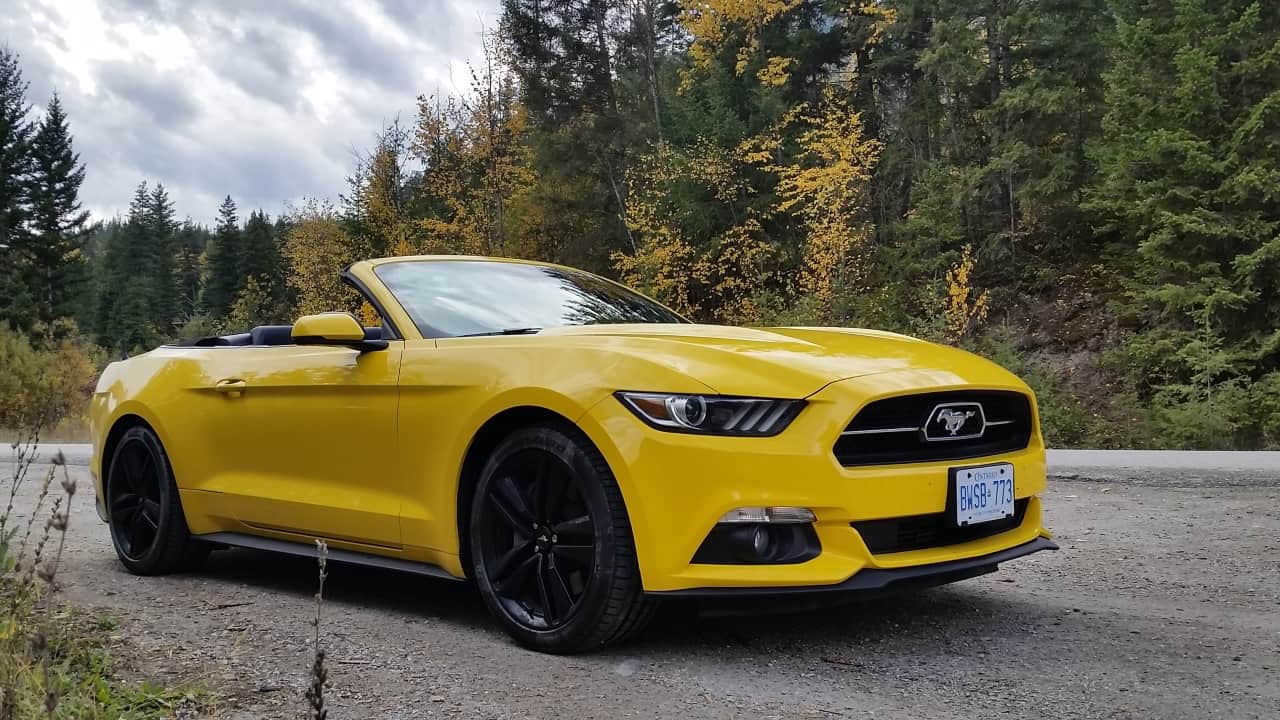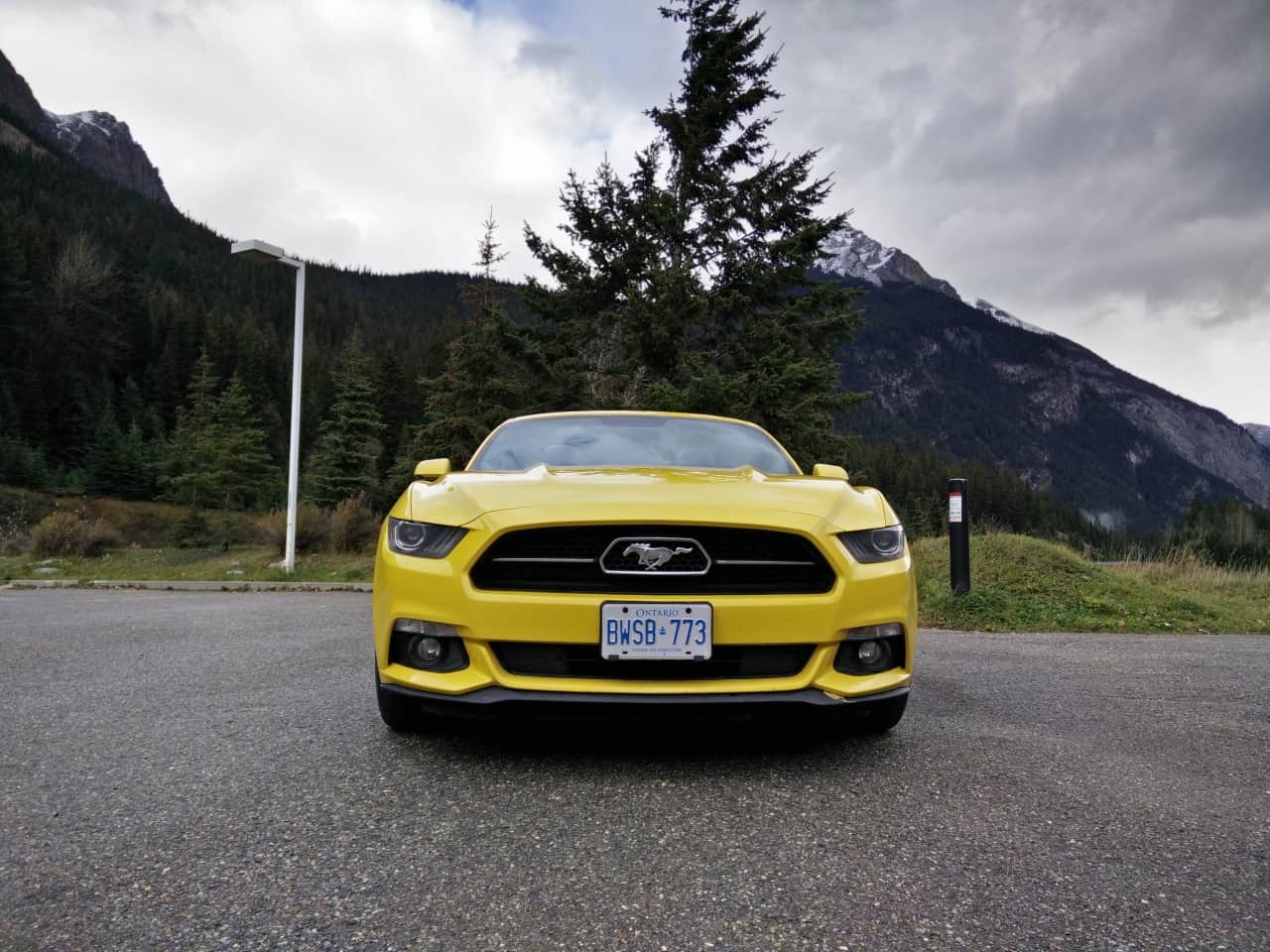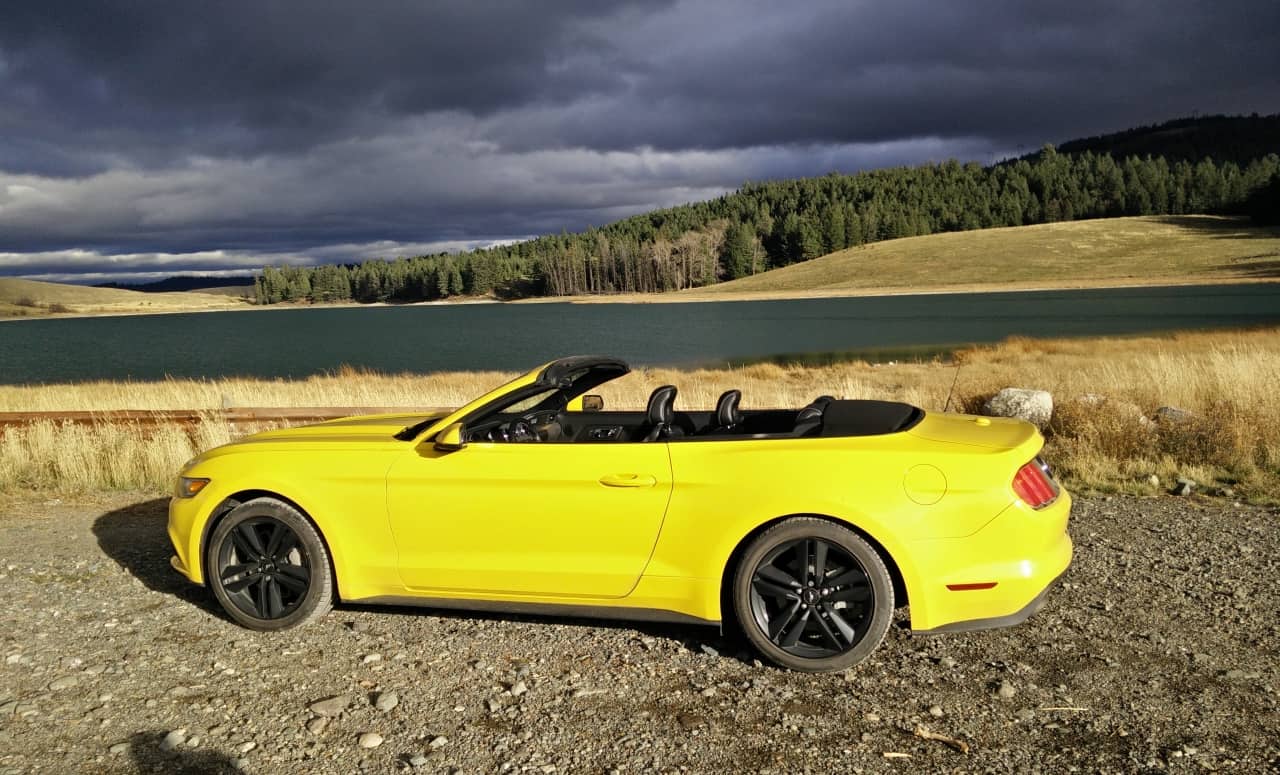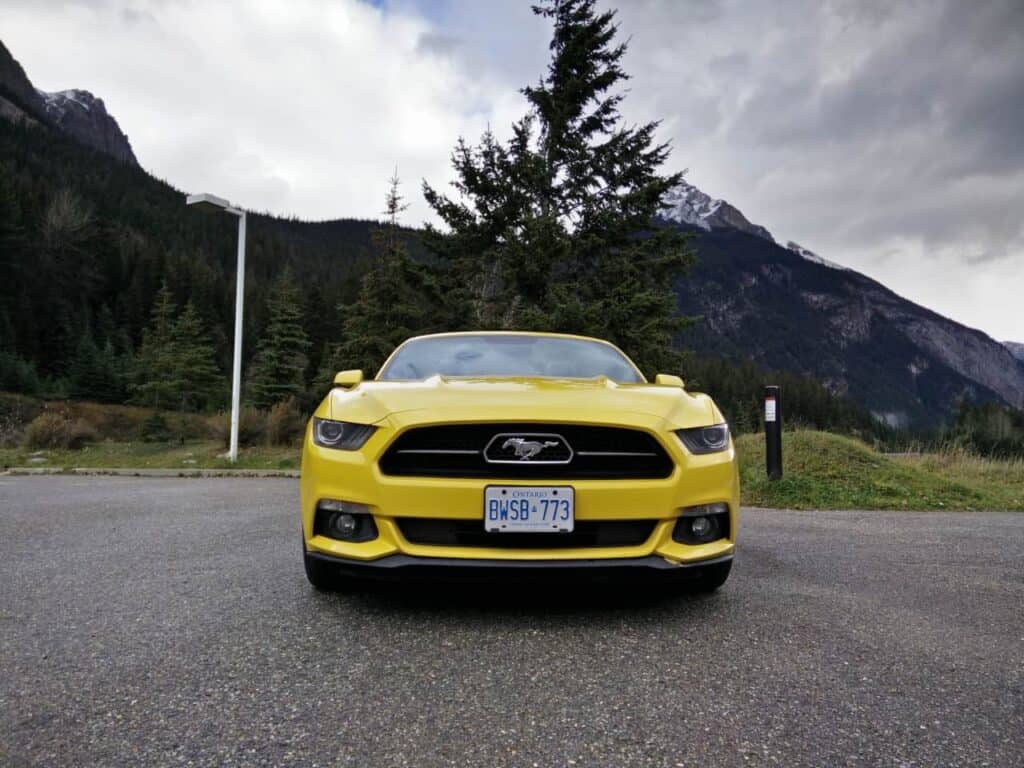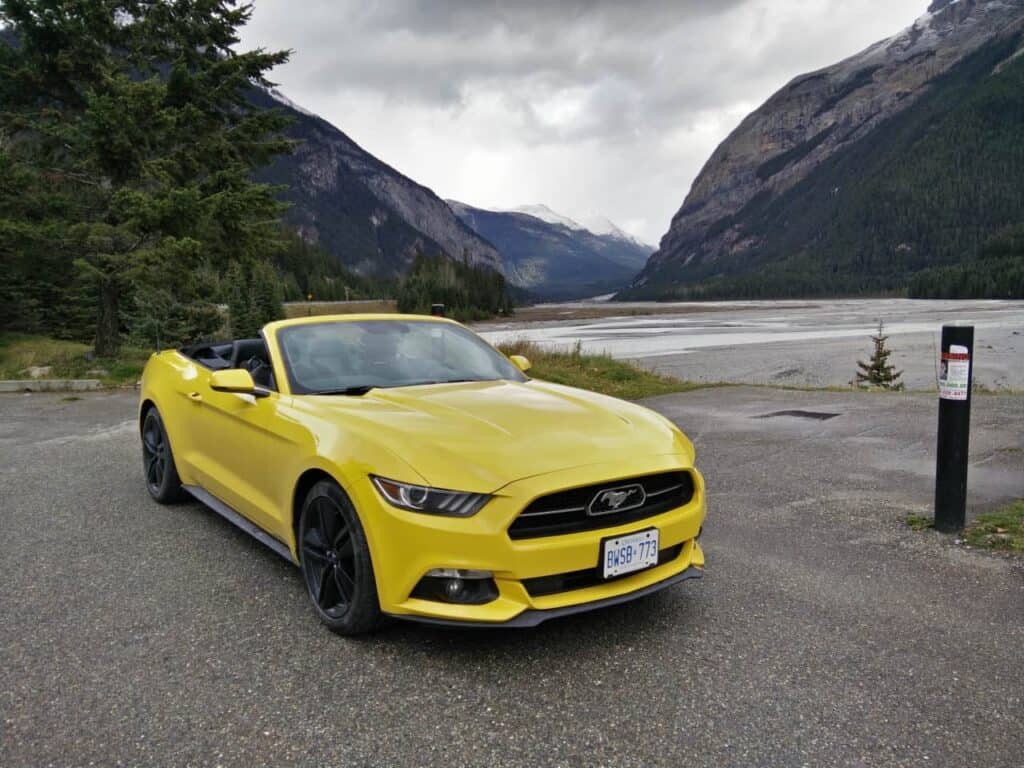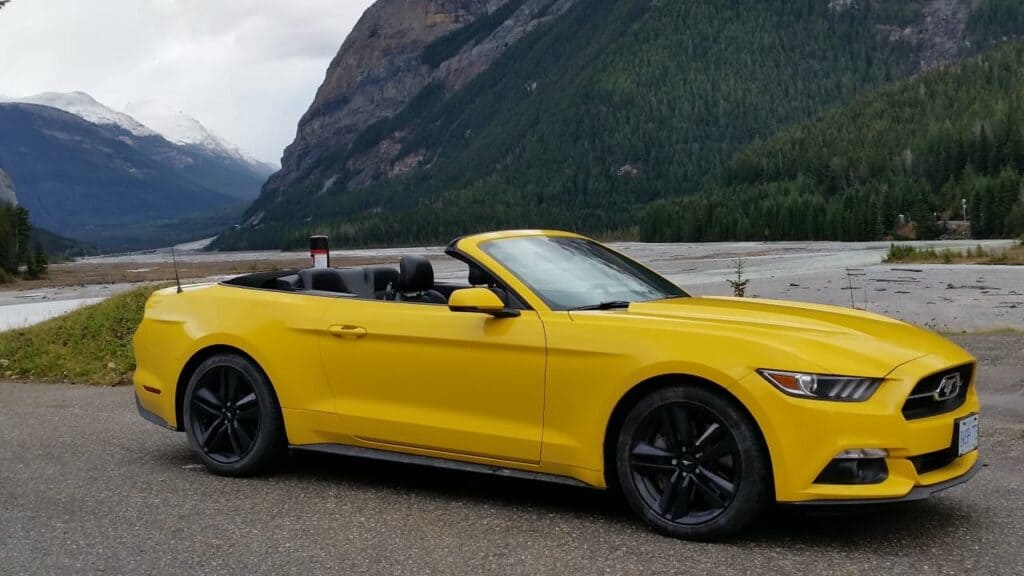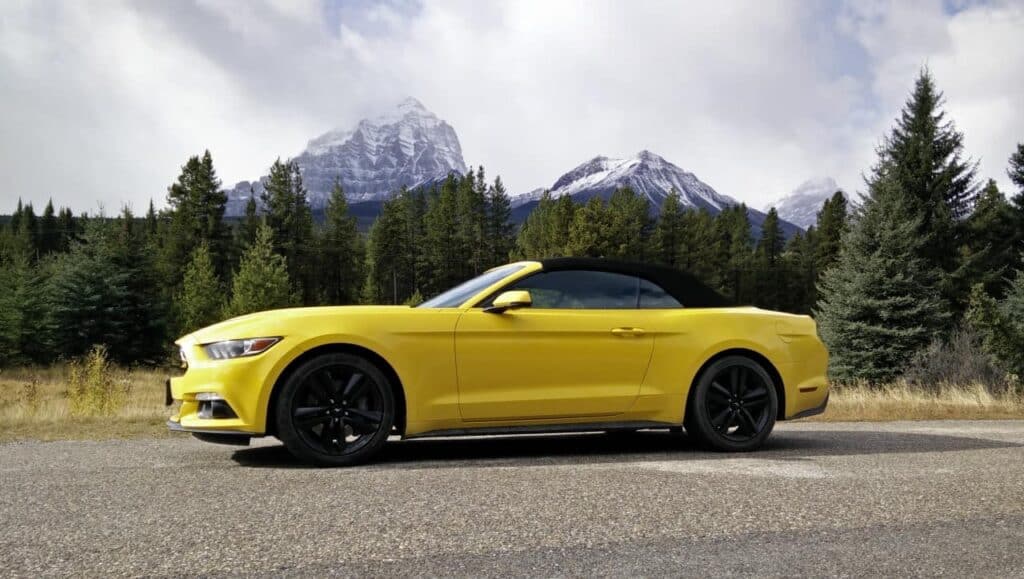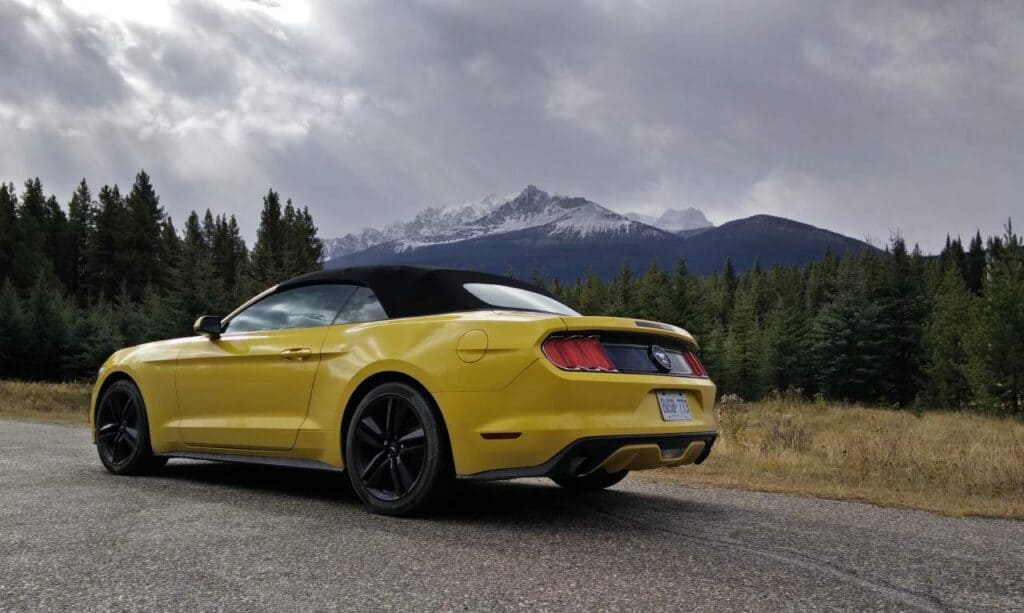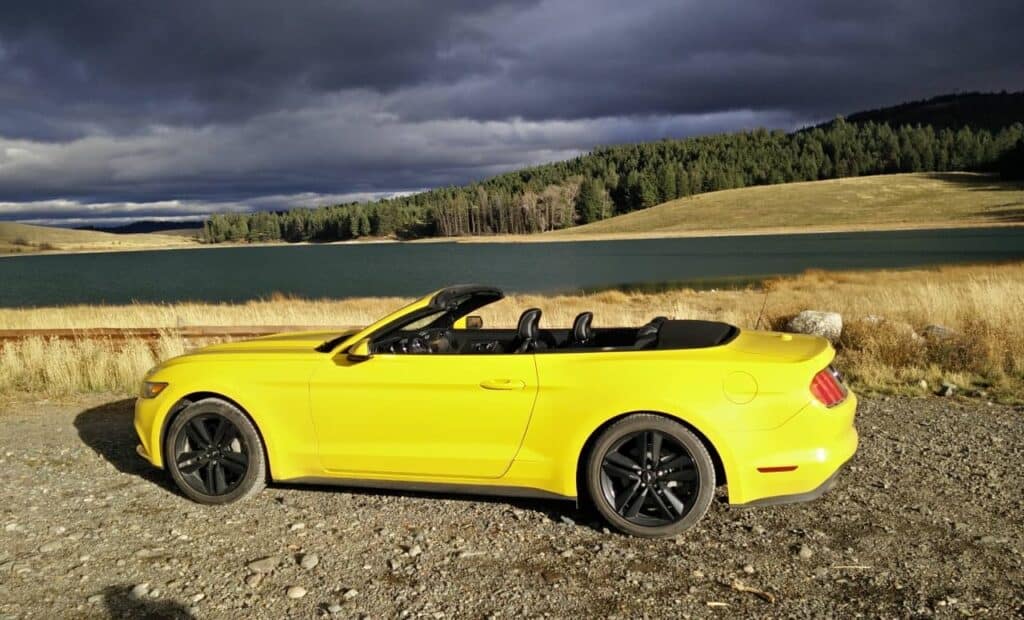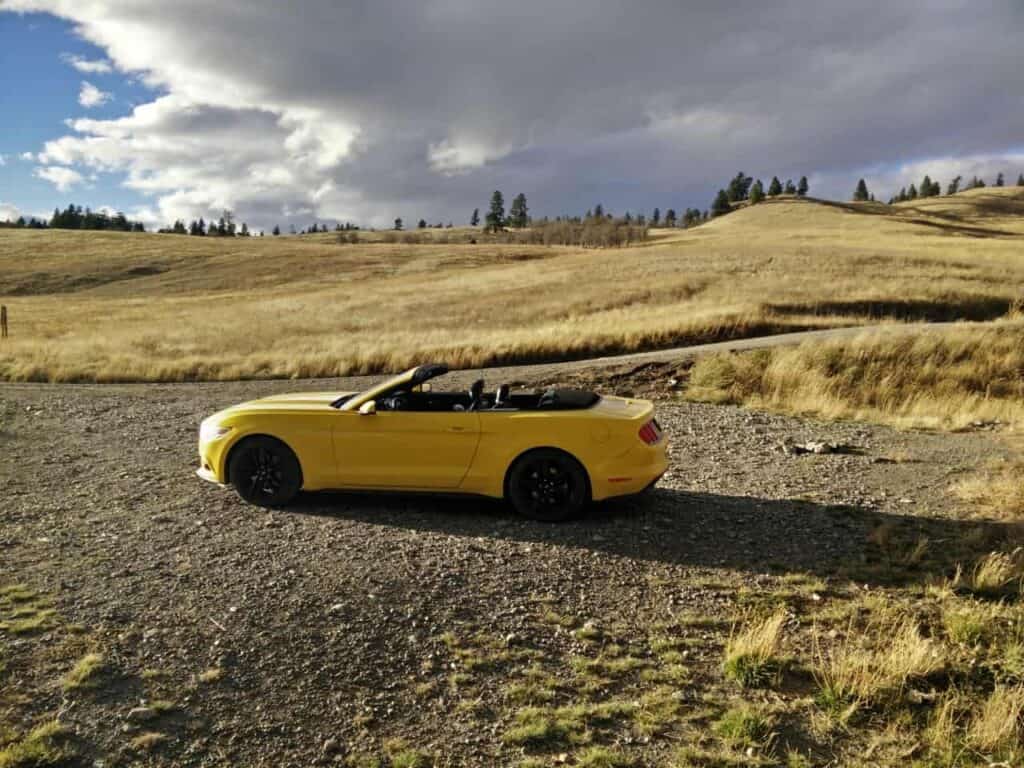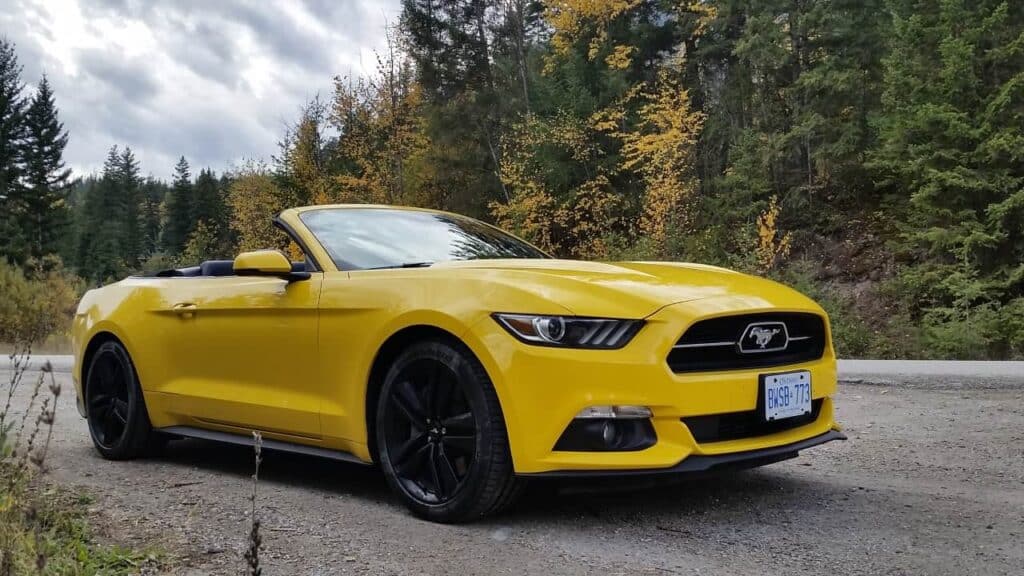Muscle cars are famous for their V8 engines, thundering exhaust notes, lots of power, drag racing, and not being able to take corners… and none of the above applies to the new 2015 Ford Mustang EcoBoost.
You see, the 6th generation Ford Mustang is a muscle car, but it is a modern take on the classic muscle car. It is offered with the thundering V8 engine muscle cars are known for and also a V6 engine, but the car we had for our week long review came with a turbocharged 4-cylinder engine, last time Ford offered a turbocharged engine on the Mustang, some of us weren’t even born yet. And of course, this new Mustang is also finally equipped with an independent rear suspension.
We spent a week reviewing a bright yellow 2015 Ford Mustang EcoBoost Convertible, after spending a week in the Mustang GT earlier in the year, we take a look at how a 4-cylinder Mustang feels. Head on over to our review of the Mustang GT, to read our thoughts on power, styling, etc.
The new Mustang is offered in five different packages, three of them are for normal street use and two of them are more for racing (still street legal). The base model is the V6-powered Mustang, then there’s the all-new 4-cylinder model, and the familiar V8 powered GT model. The other two Mustangs are the Shelby GT350 and Shelby GT350 R.
The 2015 Ford Mustang EcoBoost Convertible has a starting price of $39,399 in Canada. Our review car had quite a few options and the final price came to $50,999 plus $1,650 destination & delivery. Options included Triple Yellow Tricoat paint ($550), equipment group 201A ($2,000), which comes with 12 speaker Shaker audio system, driver memory and seats, blind-spot monitoring, and cross traffic alert, 6-speed automatic transmission ($1,500). Adaptive cruise control with front collision warning ($1,600), EcoBoost Performance Package ($3,000), which includes 255/40R 19 tires with painted black wheels, and 3.55 ratio limited slip axle. Voice activated navigation system ($1,700), Reverse Park Assist ($350), 50th Anniversary Package ($1,700), which includes 50th anniversary floor mats and rear spoiler delete.
Ford has been using the turbocharged EcoBoost engines in its range of cars for a while now, they’ve finally decided to put one of those engines into the Mustang. The 2.3 liter 4-cylinder engine produces 310 horsepower at 5,500 rpm and 320 pound-feet of torque at 3,000 rpm. These figures are based on 93 octane gasoline, but the Mustang is perfectly fine on 87 octane, if you don’t feel like paying the extra 30 to 40 cents per liter, which adds up very quickly. According to Ford, the Mustang EcoBoost should consume 11.0/7.4/9.4 L/100 km in city/highway/combined driving. I drove the Mustang EcoBoost almost 2,000 kilometers on a round trip of the Canadian Rockies, in pure city driving I was able to get a solid 13.0 L/100 km and on the highway I got 8.5 L/100 km, according to the trip computer’s fuel consumption numbers.
Everyone wants to know how the 4-cylinder engine performs in the new Mustang, the answer is pretty simple, it performs okay. It isn’t the greatest but it isn’t the worst thing out there either.
The first thing you’ll notice about the 4-cylinder engine is the exhaust sound, or the lack of sound. Of course you’re not going to get the rumble of the V8, but even for a 4-cylinder sports car, I found the exhaust to be pretty quiet, which can be attributed to the turbocharger. Turbo cars never sound as nice as their naturally aspirated counterparts, in my opinion.
As for horsepower, the 310 HP and 320 lb-ft of torque produced by the engine seems adequate enough on the Mustang. The power is still more than enough to give you miles upon miles of driving pleasure; there’s enough power to drift, do donuts, and other things the “po-po’s” frown upon. In normal city driving, the Mustang feels fast and like a sports car, and on highway, it can pass cars easily and get you up to speeds that will easily land you in hot water with the local Sheriff.
4-cylinder engines are never as smooth as 6 or 8-cylinder engines, but I found the 2.3-liter EcoBoost on the Mustang to be even rough for a 4-banger. Maybe it was just the engine on our review car that was rough, because I found the smaller 2.0-liter EcoBoost engine on the Focus ST to be more refined and smoother.
Since the introduction of the independent rear suspension, the ride and handling of the Mustang have improved substantially. The Mustang GT we reviewed earlier this year had quite a stiff ride, the GT’s suspension is a bit stiffer than the EcoBoost and it gets even stiffer with the “Perfromance Package”. The Mustang EcoBoost convertible also loses a bit of rigidity because of the removal of the fixed roof, so with all these differences, I found the 4-cylinder Mustang to have a much more relaxed drive, which came in handy on my 2,000 kilometer trip, I think I my back would’ve been much sorer had I taken the GT on this long trip.
The interior is pretty much the same as the one on the Mustang GT, the big difference is the absence of the beautifully supportive Recaro bucket seats. In my previous review, I mentioned how much the interior had improved over the previous generation Mustang and I’ve been a fan of the changes to the layout and the materials used.
With the soft top up, the interior is fairly quite, I did notice a bit of extra wind noise on the passenger side rear window, where the glass meets the roof, and there are a few extra creaks and squeaks on the convertible. The cloth-top does however keep things well insulated and feels pretty solid. With the roof down, there is quite a lot of wind buffeting and noise in the cabin at highways speeds. At normal city speeds, the noise level is down to an acceptable level and there’s not much wind buffeting, it’s pretty comfortable to cruise around town.
Final Thoughts
The new Mustang EcoBoost is a great addition to an already great looking car, the 4-cylinder is not going to replace the V8, but I believe these those cars are aimed at different demographics. The 4-cylinder will save you a bit at the pump and is cheaper to buy outright, it’s for people that just want to enjoy a sports car and a Mustang, people who don’t really want or need all the power the V8 produces.
